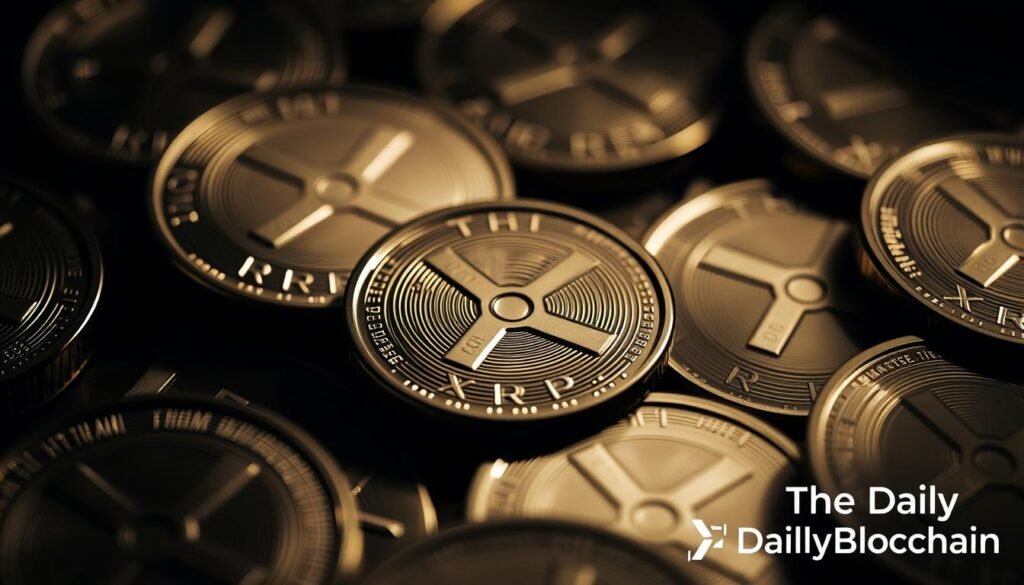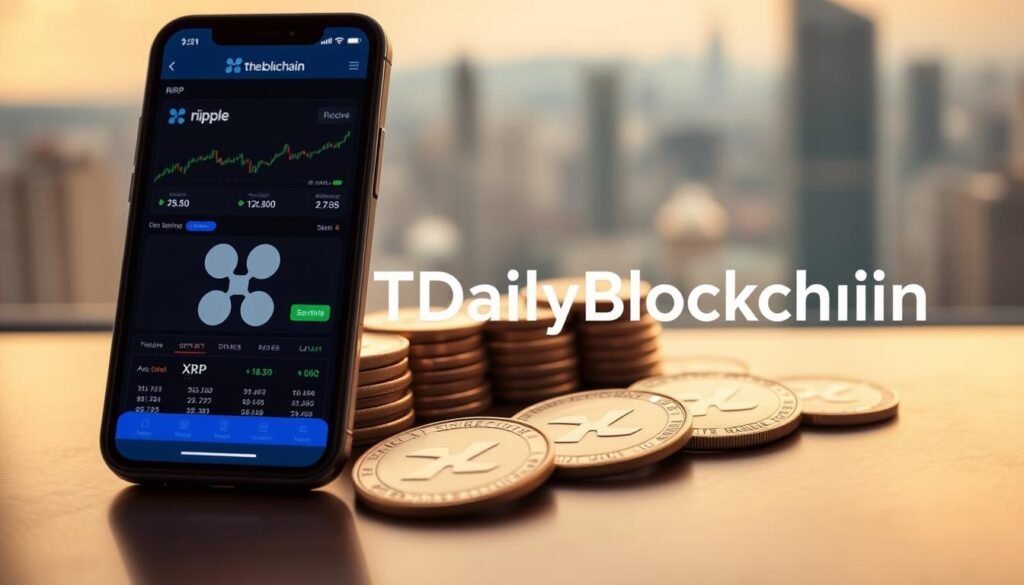Surprising fact: over 1,000 financial institutions have explored Ripple’s payments tech, showing how fast value rails can reshape the global payments world.
This article is an ultimate guide that explains what the xrp cryptocurrency is, how it works, and why it matters to investors and payment providers. Founded in 2012 and rebranded from OpenCoin in 2015, Ripple is a private company that created the Ripple Protocol and the open-source XRP Ledger.
The digital token settles transfers in about 3–5 seconds on a permissionless, distributed ledger. Its core value is near-instant settlement and low-cost transfers, designed as a bridge currency to connect different payment systems.
This article previews market topics like liquidity, price behavior, and institutional interest so U.S. readers can assess fundamentals, exchanges, and risks. Later sections cover validators, consensus, tokenomics, regulation, and real-world use cases.
Our goal is to give clear, impartial guidance so readers can judge the role and practical utility of this currency among other cryptocurrencies without the hype.
Key Takeaways
- Ripple Labs built the protocol; the company and the token are distinct.
- Settlement is fast—typically 3–5 seconds—benefiting cross-border value transfer.
- The token serves as a bridge currency to improve liquidity between systems.
- Institutional interest and market fundamentals can shape price and adoption.
- This guide covers tech, tokenomics, use cases, and regulatory context for U.S. investors.
Ripple vs XRP: What the XRP cryptocurrency actually is
Many people mix up the company that builds payment software with the native token used on its ledger. Ripple is the private software firm behind tools and services, not the digital asset itself.
The term “ripple network” is often used loosely. It can mean RippleNet (an enterprise payments suite), the open-source XRP Ledger, or related tooling such as RippleX, PayID, and Interledger.
XRP is the native currency on the XRP Ledger and settles in about 3–5 seconds. Holding this token is not the same as owning equity in the company.
The Ripple Protocol defines standards, while the ledger is permissionless: anyone can use or build on it without company approval. Independent validators run the network, a point that matters for decentralization debates later.
How the XRP Ledger works: technology, consensus, and validators
The ledger powering this payment-focused token is built for speed and low cost. Transactions reach finality in about 3–5 seconds using a lightweight consensus mechanism rather than energy-heavy mining.
Open-source, permissionless ledger and near-instant settlement
The XRP Ledger is open-source and permissionless, so anyone can read the code or connect a node. Its design prioritizes rapid settlement and low fees, which suits cross-border payments and high-throughput use cases.
Consensus and HashTree: comparing to Proof-of-Work
Instead of proof-of-work block creation, consensus agrees on a ledger state using a compact HashTree-style summary. Nodes validate a derived value that represents the current state, reducing latency and energy use.
This approach yields higher throughput and far lower confirmation times than typical blockchain mining systems. That matters for enterprises that need predictable settlement speeds.
Validators, UNL, and who runs the network
Consensus runs across independent validators. There are currently 36 validators; Ripple operates six (~16%). Universities, exchanges, and financial institutions run many of the others.
Anyone can operate a validator node. Participants often use Unique Node Lists (UNLs) to select trusted validators and streamline agreement. These protocol choices affect scalability, fees, and perceived decentralization.
- Fast finality: 3–5 second settlements.
- Low cost: minimal transaction fees compared with mining-based chains.
- Diverse operators: academic, exchange, and institutional validators enhance resilience.
Origins and evolution: from OpenCoin to Ripple Labs and XRP
The story behind Ripple and its native token begins years before Bitcoin, with ideas aimed at speeding up money movement.
Timeline highlights
Early protocol concepts trace back to 2004, well before most modern digital asset projects took shape.
In 2012, Chris Larsen and Jed McCaleb founded the company initially called OpenCoin. The firm built the ledger and token to solve slow settlement problems.
By 2015 the business rebranded as Ripple, signaling a push toward enterprise payments and broader market adoption.
Founders, funding, and global footprint
Co-founder Jed McCaleb brought experience from projects like eDonkey, Stellar, and early exchanges; Chris Larsen added fintech leadership and fundraising clout.
Today the company has 500+ employees, nine offices worldwide, and targets banks and non-bank institutions with partnerships and enterprise funding.
Why it matters: this history explains design choices that prioritized speed and low cost, and it helps investors and readers of this article judge the token’s strategic focus in the global payments world.
Tokenomics of XRP: supply, escrow, and the 300 million lock
Token controls and release schedules shape liquidity and, by extension, market behavior for digital assets.
Total supply vs circulating supply: The ledger was designed with a total supply of 100 billion tokens. Roughly 45.404 billion are currently circulating, so available supply is far lower than the design cap.
Escrow mechanics: Ripple originally held about 55 billion and set an escrow system that can release up to 1 billion tokens per month. Any unused allocation is re-locked, creating a predictable monthly rhythm that investors can track.

Impact of the 300 million lock: Locking 300 million from escrow aims to reduce near-term selling pressure. That may support price stability, but it does not guarantee immediate appreciation.
- Supply scheduling adds transparency and lowers surprise risk.
- Predictable releases interact with demand to shape long-term value.
- Company-managed supply can raise decentralization questions; regular reports help build confidence.
Real-world utility: payments, institutions, and liquidity solutions
Banks and payment providers are testing faster rails that cut settlement from days to seconds. That shift focuses on practical outcomes: lower fees, quicker reconciliation, and reduced capital tied up in transit.
Cross-border speed and liquidity
Near-instant settlement lets institutions finish transactions in 3–5 seconds. Quick finality reduces reconciliation costs and speeds cash flow for businesses and banks.
Using on-demand liquidity, network participants can source liquidity when needed. That cuts pre-funding needs and improves capital efficiency for correspondent banking corridors.
Enterprise tools and interoperability
RippleNet offers a standardized network for financial institutions to move money across currencies with consistent messaging and APIs.
Developer tools from RippleX, plus identifiers like PayID and protocols such as Interledger, expand interoperability. These components let banks and non-bank institutions integrate legacy systems and new rails.
| Feature | Legacy rails (SWIFT) | Modern payment rails |
|---|---|---|
| Settlement time | Hours to days | 3–5 seconds |
| Liquidity model | Pre-funded corridors | On-demand sourcing |
| Reconciliation | Manual, delayed | Automated, near-instant |
| Developer access | Limited APIs | Open tooling and SDKs |
Central bank digital currency pilots often explore how a bridge currency could ease multi-currency corridors. That experimentation highlights the protocol and technology design that supports open participation while meeting enterprise reliability needs.
- Practical use: faster payouts, cheaper remittances, and simpler settlement for banks.
- Operational gains: reduced reconciliation effort and lower capital locks.
- Interoperability: developer tools and protocols enable real-world integrations.
How to get started: buy XRP, store it, and use it
If you want to get started with this bridge currency, follow a simple, step-by-step plan that fits U.S. rules and common security practices.

Where and how to buy on an exchange
Choose a regulated exchange in the United States, complete identity verification, and deposit USD. Place a market or limit order to buy ripple on the platform you trust.
Choosing a wallet: exchange custody vs self-custody
Exchange wallets are convenient for trading and quick transfers. They hold keys for you but require trust in the platform.
Self-custody gives you control: you keep private keys and backup phrases. That control brings responsibility for secure storage and recovery.
Step-by-step basics for U.S. investors
- Pick a regulated exchange and finish KYC.
- Deposit USD and compare fees, spreads, and liquidity.
- Place an order to buy ripple and confirm network withdrawal details before moving funds.
- Enable multi-factor authentication and keep backup phrases offline.
- Remember buying xrp is not owning equity in the company; check tax reporting rules.
- Test small transfers, try quick currency swaps, and document transactions for records.
Checklist: compare fees, confirm withdrawal network, and review wallet and exchange terms in this article before you proceed.
Market performance: XRP price history, volatility, and liquidity
Market moves for this token have traced big swings, from a 2018 peak to long drawdowns and episodic rallies.
From all-time high to present: key milestones and ranges
In January 2018 the asset reached an all-time high near €3.18, then retraced sharply during the bear cycle that followed.
Since then, periods of renewed interest tied to adoption news and legal headlines created short-lived surges and wider ranges on the exchange order books.
What drives price moves: supply events, adoption, and sentiment
Several forces shape price:
- Escrow schedules: predictable monthly releases often weigh on sentiment, though markets usually price them in.
- Partnerships and adoption: institutional integrations can boost perceived value and trading demand.
- Regulatory news: headlines cause sharp volatility as investors re-assess risk.
- Exchange liquidity: thin order books amplify realized volatility and widen spreads for large trades.
Practical note: investors should watch on-ledger activity, developer traction, and corridor growth to judge longer-term value. Size positions for volatility, use stop limits, and expect that short-term charts can decouple from real-world adoption metrics.
Decentralization debate and regulation: XRP’s ongoing scrutiny
Debates over decentralization and legal status shape how institutions view this digital asset. The ledger is maintained by independent validators — universities, exchanges, and financial firms — while the company operates a minority share (about six of 36 nodes). That split informs both technical and governance perceptions.
Is the network decentralized? Validators, governance, and consensus
Decentralization is implemented through independent validators and optional UNLs (Unique Node Lists). Participants choose which validators they trust, and consensus emerges from the selected set. This design reduces reliance on mining and differs from Proof-of-Work blockchain models in speed and energy use.
The company’s limited validator presence shows influence, not sole control. Operational independence of many nodes, open-source code, and public ledger data support a practical, transparent model of decentralization.
SEC allegations and implications for institutions
In 2020 the SEC alleged the asset was an unregistered security tied to the company’s holdings and sales. Ripple defended itself by stressing the network’s decentralization and that owning the token does not confer company profits or control.
Regulatory outcomes affect institutions’ decisions on custody, compliance, and exposure. Clear rulings can boost adoption; adverse findings may restrict on-ramps and institutional participation worldwide. Follow updates closely to assess how legal clarity will shape the process for banks and payment providers.
“Owning the token does not grant rights to company profits,” Ripple argued in its defense.
Conclusion
In summary, the ledger-backed token is designed to move value quickly between currencies and reduce capital tied in transit.
The core thesis: this xrp token functions as a purpose-built bridge currency that enables near-instant settlement (3–5 seconds) and low-cost transactions across banks and rails.
Financial institutions and crypto firms watch the ripple network for its institution-focused tools, predictable escrow releases, and evolving regulatory clarity that could shape market outcomes.
Tokenomics matter: a 100 billion total supply, escrow scheduling and the 300 million lock affect liquidity, price discovery, and perceived value over time.
To get started, use a compliant exchange, pick a secure wallet, and test small transfers. Compare liquidity, fees, and custody before you act.
Institutions should assess technology fit, compliance frameworks, and integration ability. Align any use with objectives, risk tolerance, and operational needs.
FAQ
What is XRP and how does it relate to Ripple the company?
XRP is a digital asset native to the XRP Ledger, a permissionless, open-source payments ledger. Ripple Labs is a private company that develops products and services—like RippleNet and RippleX—that use the ledger and promote institutional payments solutions. While Ripple created many tools around the ledger and holds a substantial token allocation, the ledger itself runs independently via validators and a consensus protocol.
How does the XRP Ledger reach consensus without mining?
The ledger uses a consensus algorithm where trusted validators propose and agree on the next ledger state in rounds. This process settles transactions in seconds and avoids energy-intensive proof-of-work mining. Validators form Unique Node Lists (UNLs) and require broad agreement to finalize transactions, delivering speed and low fees for payments.
Who runs validators and how decentralized is the network?
Validators operate worldwide and include universities, exchanges, financial institutions, independent operators, and community members. Decentralization is measured by the diversity of validators and control over UNLs. Over time the network has seen more independent validators added to reduce concentration and improve resilience.
What was the origin and timeline of the project?
The idea began in the mid-2000s and the XRP Ledger launched publicly in 2012. Ripple Labs (originally OpenCoin) later developed commercial services and rebranded. Since then the company raised funding, expanded partnerships with banks and payment firms, and released products for cross-border liquidity and payments.
How many tokens exist and what is the circulating supply?
The ledger was designed with a maximum supply of 100 billion tokens. Ripple initially held a large allocation and placed many in escrow with scheduled monthly releases to help manage liquidity. Circulating supply differs from total supply due to escrow, custody, and market trading balances.
What is the escrow system and why does Ripple use it?
Escrow is a technical mechanism that locks a set amount of tokens and releases them on a fixed schedule. Ripple uses monthly escrow releases to provide predictable token availability and reduce sudden supply shocks. Unreleased tokens remain out of circulation until unlocked, and Ripple has periodically re-locked portions to adjust supply expectations.
How is the asset used in real-world payments?
The ledger and related products target cross-border payments, liquidity on demand, and faster settlement than legacy rails like SWIFT. Institutions can use the token as a bridge asset for corridors with low liquidity, and solutions like RippleNet, Interledger, and PayID aim to simplify payments integration across systems and currencies.
Where can I buy the token and how should I store it?
The token is available on many centralized exchanges and some decentralized markets. U.S. investors should choose an exchange with clear compliance and security practices, complete identity verification, and supported withdrawal options. For custody, you can use exchange wallets for convenience or self-custody via hardware or software wallets for greater control of private keys.
What factors drive price and market volatility?
Price moves respond to supply events (like escrow releases), adoption by institutions, trading liquidity, macro crypto sentiment, and regulatory news. Large holdings and coordinated sales can influence short-term liquidity, while real-world adoption and partnerships can support long-term value trends.
Has regulation affected the project and its use by institutions?
Regulatory scrutiny, including litigation and guidance from securities regulators, has shaped exchange listings, institutional engagement, and compliance measures. Some firms paused activity during legal uncertainty, while others continued integration with enhanced compliance and custody safeguards.
How do RippleNet, RippleX, and Interledger differ?
RippleNet is a commercial payments network for banks and payment providers to source liquidity and route payments. RippleX focuses on developer tools, APIs, and services to build on the ledger. Interledger is a protocol-agnostic suite for transferring value across ledgers and payment systems, enabling cross-network interoperability.
What are the main risks for investors and institutions?
Key risks include regulatory changes, concentration of token holdings, market volatility, and technology or integration challenges. Institutions also weigh compliance, custody, and reputational considerations before adopting new rails or using the token as a liquidity tool.
Can the ledger handle high transaction volumes for global payments?
The ledger is designed for high throughput with low fees and sub-second settlement for typical payment loads. Scalability depends on validator performance, network infrastructure, and the specific integration architecture used by payment providers.
How do central bank digital currencies (CBDCs) and banks interact with the ledger?
The ledger’s interoperability features and settlement speed make it a candidate for experimentation with CBDCs and tokenized assets. Some central banks and financial institutions have run proofs of concept to test cross-border settlement, tokenized fiat, and interoperability using existing protocols and rails.
How can a U.S. investor get started safely?
Start by researching reputable exchanges, confirm regulatory compliance and listing status, enable strong account security (2FA), and consider a hardware wallet for long-term holdings. Keep allocations appropriate to your risk tolerance and stay informed about regulatory developments and escrow schedules that can affect supply.



